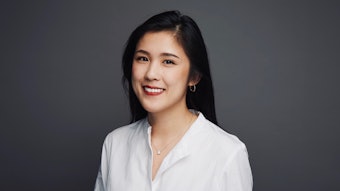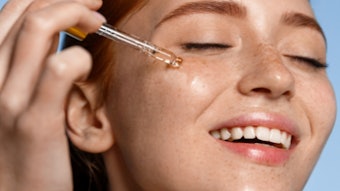
Zürich—The 23rd IFSCC Congress, held Sept. 21-23, 2015, reported “more facts and less illusions” to some 550+ delegates from across the globe at the forefront of cosmetic product innovation. (View our photo album on Facebook.)
(Continued from Part II)
Formula Fantasies, Bubbling Mascara and the 'Heartbeat' of Hair
The afternoon opened with a keynote lecture by Majella Lane, of the UCL School of Pharmacy in London. She presented on “formulation fantasties”—a topic inspired by the Cosmetics & Toiletries article published in July 2013. She gave examples of claims made that misrepresent the facts about formulations used on the skin for personal care.
For example, the skin penetration of most actives does not exceed more than 2-4% of the applied amount, which she noted reflects a lack of focus on the vehicle and a lack of awareness that the fate of the active is linked to the carrier components of the formulation. She added that skin formulas have also suffered from the idea that they can be “do-all formulations.” “Cosmetic actives vary in water solubility and lipophilicity,” she explained, “so no single formulation can address these competing requirements.”
Following Lane was a study by Saejin Park and co-authors, of Hanbul Cosmetics Co., on the use of a bubble system to develop mascara with low specific gravity and a lightweight feel. Ludger Josef Fischer, of Lucerne University, discussed how to increase quality and reduce cost by scaling down from production to the lab. He recommended, "Send your lab people to production, and production people to the lab so they understand one another." Finally, work by Daniele Cristina Zulim Botega and co-authors highlighted organogels to stabilize cold-processed emulsions for cosmetic products.
After a brief coffee break and additional poster viewing, the session moved into hair care with a keynote by Bruno Bernard, of L’Oréal. His overview of the “yin and yang” of the hair follicle looked at how balanced forces control the hair cycle. He noted, “follicles do not follow the same behavior throughout life,” and presented a new view of hair follicles: that they are bistable. Bernard described numerous approaches to controlling hair loss, i.e., caffeine, histones, cannabinoids, arginine, IG-1 and cyclosporin-A, but came to the conclusion, “There are a number of pathways between growth and inhibition, so just one molecule won’t cut it.”
Next up was Erik Schulze zur Wiesche, of Henkel AG, who explored two approaches to measure the natural swing frequency of hair: driven oscillation, i.e., “walking swing,” and free oscillation or a single swing. His findings indicated that bleached hair stops swinging sooner than virgin hair. “Furthermore, virgin swing has a soothing, natural frequency closer that of the heartbeat,” he added.
In the last talk of the day, Emmanuel Everaert, of Ashland Specialty Ingredients, presented an approach to strengthen hair fibers from within the cortex. After the first full day of presentations, attendees left with several new tricks up their sleeves—some even acquiring a knack for playing the Alphorn.
Nutritional Beauty, Sexual Selection and Efficacy Factor
Tony Rawlings kicked off the second day of the conference with a presentation to a full house on anti-aging and whether the industry is stuck in a trough. He explained that despite decades of product development, consumer research indicates the industry is still not fully meeting consumer demands especially in the anti-aging area. This could be because the understanding of wrinkle biology is limited. During the Q&A session, he theorized “the future for novel anti-aging effects may lie in oral nutrition.”










